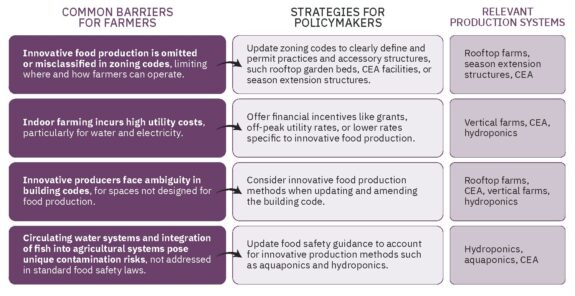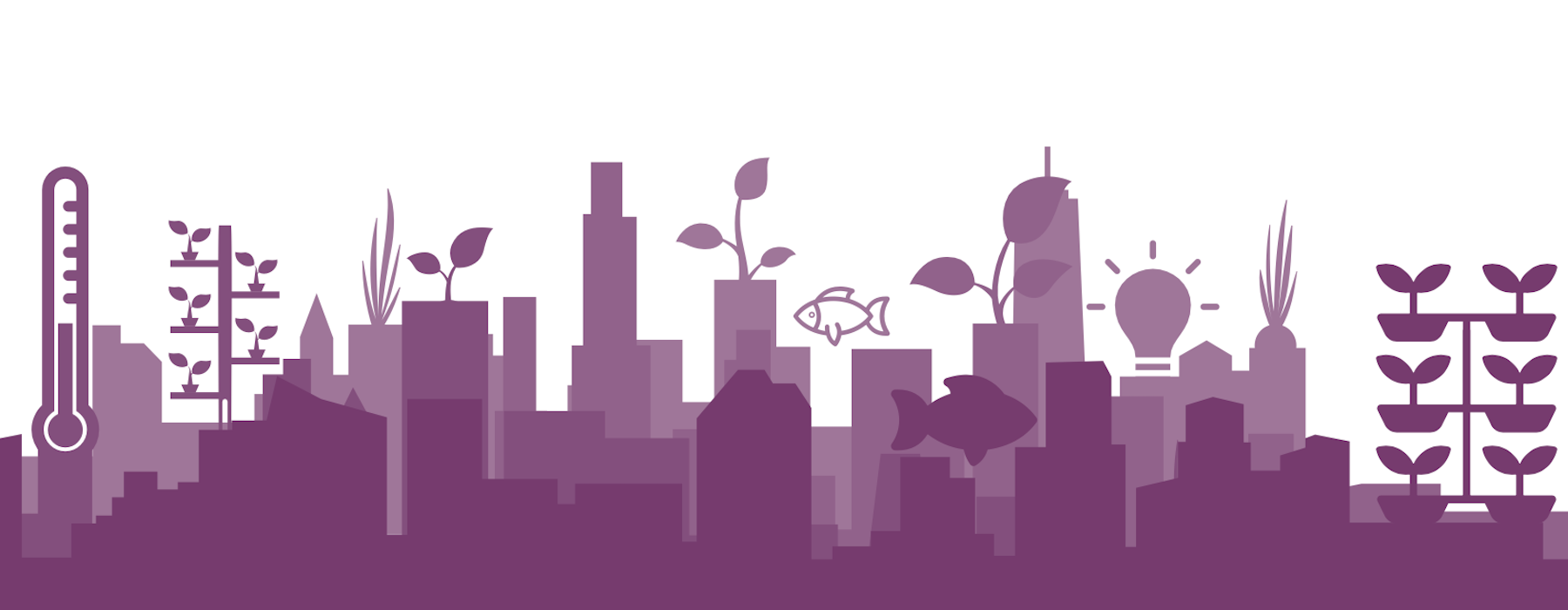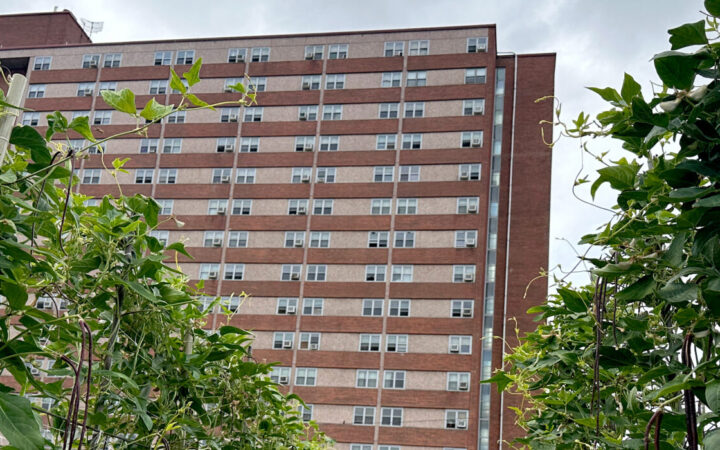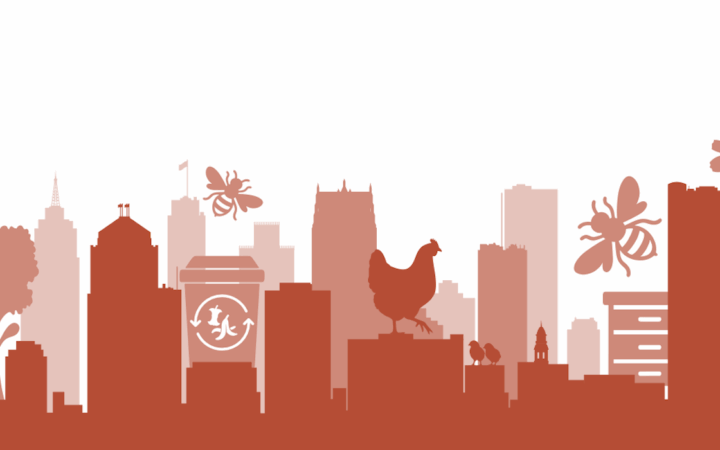This fact sheet distills the information in the Innovative Production section of “Urban Agriculture and Innovative Production: A Guide to Local Policy” into key takeaways for producers and policymakers.
Local Policy Barriers and Strategies for Urban Agriculture
In places where soil access is limited, space is tight, or growing seasons are short, alternative food production methods like hydroponics, aquaponics, aeroponics, and vertical farming can offer practical solutions. In cities and peri-urban areas, these methods can be operated in warehouses, rooftops, shipping containers and other marginal or otherwise unused spaces to grow food year-round. While not replacements for outdoor, soil-based farming, innovative agricultural production expands the range of what is possible in terms of local food production. Producers using these systems often face unclear regulations, high utility costs, and other policy barriers. By updating policies and providing targeted support, cities and other local governments can expand the options available for food production.
Innovative Food Production Systems and Their Benefits
Controlled Environment AgricultureWHAT IT IS: WHY USE IT: |
Vertical FarmWHAT IT IS: WHY USE IT: |
Season Extension StructureWHAT IT IS: WHY USE IT: |
HydroponicsWHAT IT IS: WHY USE IT: |
Rooftop FarmWHAT IT IS: WHY USE IT: |
AquaponicsWHAT IT IS: WHY USE IT: |
Innovative Production Barriers and Policy Strategies
Innovative producers often fall outside the scope of laws and regulations that address agriculture. This can create uncertainty and roadblocks for producers who may otherwise be contributing to a city or region’s local food production goals. Below are a few common challenges faced by producers setting up an innovative production system, along with strategies policymakers can implement.

Best Practices for Producers Using Innovative Food Production Methods
▶ Check your zoning code. Learn how your city’s zoning rules apply to your production method, especially if you grow indoors or on rooftops.
▶ Search for key terms. Look for terms like rooftop farm, hydroponics, and accessory structures in the zoning code’s definitions to clarify what’s allowed.
▶ Explore special use permits and variances. If your practice is not allowed by-right in your zoning code, work with your local land use authority to see if you can apply for special permission.
▶ Review building and energy codes. Some CEA practices may trigger building or energy code requirements. Make sure you understand how your food production system applies.
▶ Seek incentives and grant opportunities. Depending on your growing operation, you may qualify for special utility rates or agriculture-specific grants.
Suggested Citation
Ctr. for Agric. & Food Sys., Innovative Production: Local Policy Barriers and Strategies for Urban Agriculture (2025), https://cafs.vermontlaw.edu/resource-library/innovative-production.



